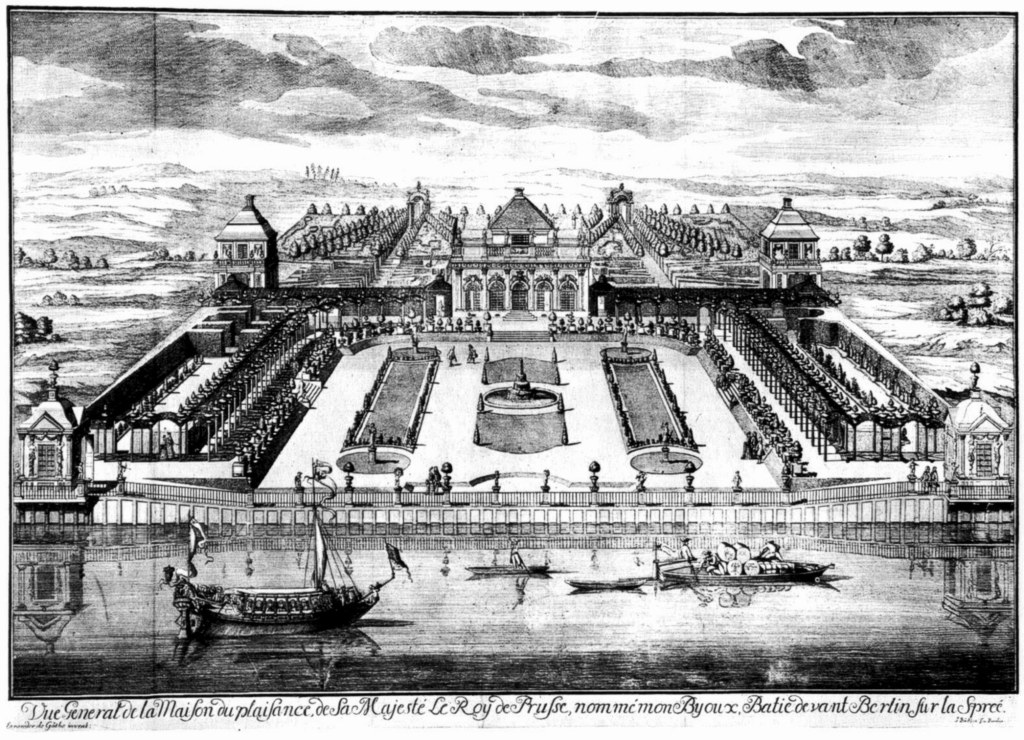Discover The Timeless Charm Of Monbijou Palace Berlin – Unveil The Magic Now!
Monbijou Palace Berlin
Introduction
Welcome, Berlin Readers! Today, we will explore the fascinating history and significance of Monbijou Palace in Berlin. This iconic landmark holds a special place in the hearts of locals and visitors alike. With its rich history and stunning architecture, Monbijou Palace is a must-visit destination for anyone interested in Berlin’s cultural heritage. In this article, we will delve into the captivating story of Monbijou Palace, its notable features, and why it continues to be a popular attraction. Join us on this journey to discover the secrets and wonders of Monbijou Palace.
1 Picture Gallery: Discover The Timeless Charm Of Monbijou Palace Berlin – Unveil The Magic Now!

Overview
Monbijou Palace, also known as Schloss Monbijou in German, was a grand rococo-style palace located in central Berlin. Built in 1701, it stood as a symbol of opulence and luxury during the Prussian monarchy. The palace was renowned for its exquisite gardens, ornate interiors, and its role as a cultural hub for the aristocracy. Unfortunately, Monbijou Palace was heavily damaged during World War II and eventually demolished in 1959. Despite its absence today, the legacy of Monbijou Palace lives on through its historical significance and the stories it tells.
What was Monbijou Palace?

Image Source: wikimedia.org
Monbijou Palace was a magnificent royal residence that stood on the banks of the River Spree in Berlin. Its name, Monbijou, translates to My Jewel in English, hinting at the palace’s splendor and allure. The palace was known for its rococo architecture, characterized by intricate ornamentation and delicate detailing.
Throughout its existence, Monbijou Palace served various purposes, including as a summer residence for Queen Sophie Charlotte of Prussia and later as a museum and cultural center. It hosted elaborate parties and performances, attracting artists, musicians, and intellectuals from all corners of Europe.
Who built Monbijou Palace?
Monbijou Palace was commissioned by King Frederick I of Prussia in 1701. The renowned architect Johann Friedrich Eosander von Göthe was tasked with designing the palace. Göthe drew inspiration from French baroque and rococo styles, resulting in a visually stunning masterpiece.
Over the years, several architects and artists contributed to the palace’s expansion and embellishment. Notable names include Georg Wenzeslaus von Knobelsdorff, who added a theater wing, and Johann Heinrich Ziesenis, who created magnificent ceiling paintings.
When was Monbijou Palace Popular?
The popularity of Monbijou Palace reached its peak during the 18th and 19th centuries. It became a symbol of the lavish lifestyle enjoyed by the Prussian nobility. The palace’s gardens were frequented by the upper class, who indulged in leisurely strolls and social gatherings.
Monbijou Palace gained further recognition during the early 20th century when it housed the Museum of Prehistory and Early History. This museum showcased a remarkable collection of archaeological artifacts, attracting visitors from all walks of life.
Where is Monbijou Palace Located?
Monbijou Palace was located in the heart of Berlin, near the Museum Island. Its strategic position along the River Spree offered picturesque views and easy access to other prominent landmarks. Today, visitors can still admire the site where the palace once stood, as well as explore the surrounding area’s historical significance.
Why is Monbijou Palace Significant?
Monbijou Palace holds great historical and cultural significance for Berlin. It was a symbol of the city’s grandeur and played a crucial role in shaping its artistic and intellectual landscape. The palace’s demolition in 1959 sparked public outcry and raised awareness about the importance of preserving historical buildings.
Furthermore, Monbijou Palace serves as a reminder of Berlin’s tumultuous past and the destructive impact of war. Its absence today stands as a testament to the city’s resilience and ongoing efforts to preserve its heritage.
How to Experience Monbijou Palace’s Legacy?
While Monbijou Palace no longer stands, its legacy lives on through various means. Visitors can explore the Museum Island, where neighboring museums showcase artifacts and artworks from Berlin’s history. Additionally, guided tours and exhibitions provide insights into the palace’s architecture and its role in Berlin’s cultural heritage.
For those seeking a deeper connection to Monbijou Palace, studying its history through books and online resources offers a comprehensive understanding of its significance. The stories shared by Berlin locals and historians help keep the spirit of Monbijou Palace alive.
Pros and Cons of Monbijou Palace
Pros:
Historical significance: Monbijou Palace played a vital role in Berlin’s history, making it a fascinating destination for history enthusiasts.
Architectural beauty: The rococo-style architecture of the palace was a masterpiece, showcasing the craftsmanship of the era.
Cultural hub: Monbijou Palace was a center for art, music, and intellectual discussions, attracting creative minds from all over Europe.
Stunning gardens: The palace’s gardens were a tranquil oasis in the heart of the city, providing a peaceful retreat for visitors.
Connection to Museum Island: The site of Monbijou Palace is located near the Museum Island, offering a chance to explore other cultural attractions.
Cons:
Destruction during World War II: The palace suffered significant damage during the war, leading to its eventual demolition.
Loss of historical treasure: The destruction of Monbijou Palace resulted in the loss of valuable artifacts and artworks.
Frequently Asked Questions (FAQ)
Q: Can I visit Monbijou Palace today?
A: Unfortunately, Monbijou Palace was demolished in 1959. However, the site serves as a reminder of its historical importance.
Q: Are there any plans to rebuild Monbijou Palace?
A: As of now, there are no official plans to rebuild Monbijou Palace. However, ongoing efforts are being made to preserve its history and legacy.
Q: Can I explore the gardens where Monbijou Palace once stood?
A: While the palace itself is no longer present, the surrounding area offers a pleasant atmosphere for leisurely walks and enjoying the riverfront views.
Q: Are there any artifacts from Monbijou Palace on display?
A: The artifacts from Monbijou Palace are dispersed across various museums in Berlin, particularly on the Museum Island.
Q: Can I learn more about Monbijou Palace’s history?
A: Absolutely! Numerous books, documentaries, and online resources delve into the history and significance of Monbijou Palace.
Conclusion
In conclusion, Monbijou Palace Berlin may no longer stand, but its legacy continues to captivate the hearts and minds of those who appreciate its historical significance. Through its remarkable architecture, cultural significance, and connection to Berlin’s past, Monbijou Palace remains an integral part of the city’s identity.
While we mourn the loss of this grand palace, we must also celebrate the efforts made to preserve its history and honor its memory. Whether exploring the Museum Island or immersing oneself in the stories shared by historians, Monbijou Palace invites us to connect with Berlin’s rich heritage and reflect on the importance of preserving our cultural treasures.
Final Remarks
As we conclude our journey through the history and significance of Monbijou Palace, it is essential to acknowledge the collaborative efforts of historians, preservationists, and the Berlin community. Their dedication ensures that the memory of Monbijou Palace lives on, inspiring future generations to appreciate the beauty of our architectural past.
While we may never witness the palace’s grandeur in person, we can still marvel at its legacy and honor the stories it tells. Monbijou Palace Berlin will forever hold a place in our hearts as a reminder of the resilience and value of preserving our cultural heritage.
This post topic: Berlin



